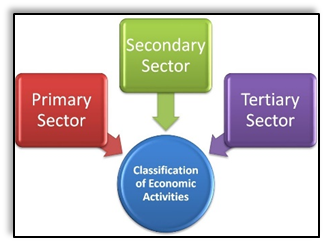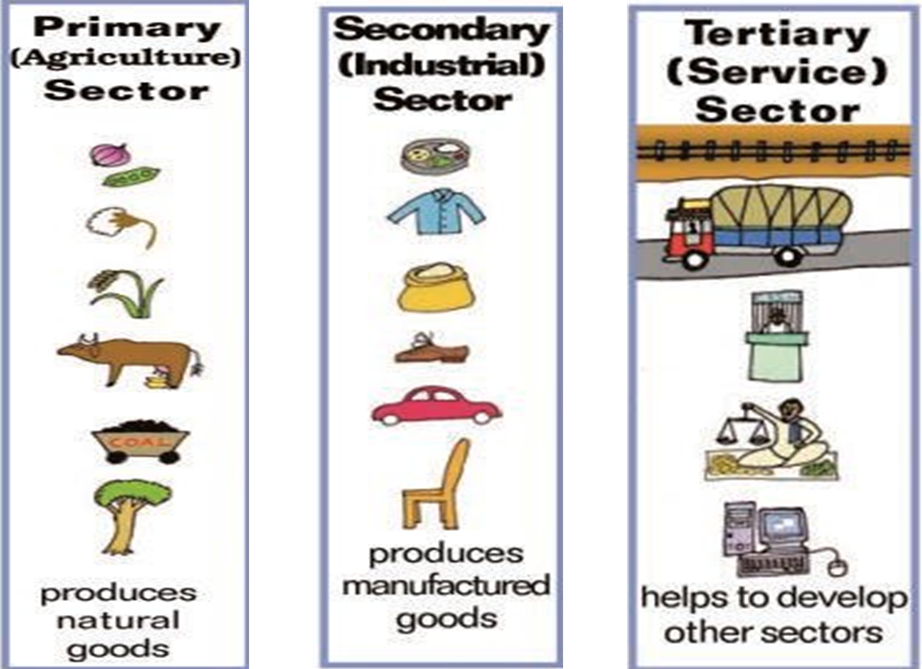- Books Name
- Understanding Economic Development Class-10
- Publication
- PathSet Publications
- Course
- CBSE Class 10
- Subject
- Economics
DIFFERENCES IN SECTORS
- We see a lot of activities taking place around us. This involves producing goods and services.
- To understand these activities, we divide them into different groups known as sectors.

PRIMARY, SECONDAY & TERTIARY SECTORS
- The various activities are categorized into three categories: Primary, secondary and Tertiary sectors. Let us have a look at each of them.
PRIMARY SECTOR
- For the growth of cotton plant, we depend mainly on rainfall, sunshine and climate. The product i.e. cotton, is a natural product. Similarly, in the case of dairy, we depend on the biological process of animals and the availability of fodder. The product here, milk, is natural. Other examples of a natural product are minerals and ores.
- When we produce a good by exploiting natural resources, it is an activity of the primary sector.
- It is called primary because it forms the base of the products that we subsequently make.
- It is also called agriculture and related sector since most of the natural products we get are from agriculture, forestry, dairy, fishing etc.

SECONDARY SECTOR
- The secondary sector, which is the second step, covers activities in which natural products are changed into other forms through ways of manufacturing that we associate with industrial activity.
- The product is not produced by nature but has to be made and therefore some process of manufacturing is essential.
- For example, the cotton that we saw in the primary sector now helps us to spin yarn and weave cloth. Using sugarcane as raw material, we make sugar or gur, the milk is used to make processed cheese etc.
- Since this sector gradually became associated with the different kinds of industries that came up, it is also called as industrial sector.
TERTIARY SECTOR
- Some activities fall neither in the category of the primary or secondary sector. They come under the tertiary sector
- These activities help in the development of the primary and the secondary sector.
- These activities, by themselves, do not produce good but they are an aid or
- support for the production process.
- For example, goods that are produced in the primary or secondary sector would need to be transported by trucks or trains and then sold in wholesale and retail shops.
- At times, it may be necessary to store these in godowns.We may need to communicate about these to consumers or maybe borrow money from banks to support them.
- Transport, storage, communication, banking, trade are some examples of tertiary activities.
- Since these activities generate services rather than goods, the tertiary sector is also called the service sector.
- It also includes additional services that do not help in the production of goods like Teaching, engineering etc.
- These sectors, although categorized differently, are interdependent.

 PathSet Publications
PathSet Publications
